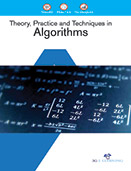Mathematics

An algorithm is any precise computational procedure that takes some value, or set of values, as input and produces some value, or set of values as output. In other words, algorithms are like road maps for completing a given, well-defined task. So, a number of codes that computes the terms of the Fibonacci sequence are an implementation of a specific algorithm. Even a modest function for adding two numbers is an algorithm in a sense, although a modest one. Every time you hit the search button on Google, the search engine sifts through thousands, if not millions of webpages, to spit out the content you are seeking in a fraction of a second. What makes this possible is the underlying algorithm—a simple set of mathematical rules embedded in the software.
The use of computers, however, has elevated the sophistication and use of algorithms in daily transactions to unprecedented levels. Although it is not the only important issue in developing a software system, efficiency can imparts a major role in the accomplishment of a system. One of the primary tools a programmer can use to achieve efficiency is the selection of algorithms to accomplish the programming task at hand.
‘Theory, Practice and Techniques in Algorithms’ will introduce some basic ideas related to the analysis of algorithms, and then put these into practice with a few examples illustrating why it is important to know about algorithms. It covers a general methodology for building efficient programs that employs the tools of data analysis and statistical inference, probabilistic analysis of algorithms, and simulation. It will show how these techniques are used in a detailed study of an application involving the Traveling Salesman Problem, and in a brief overview of several other applications. Although, it is targeted to an extensive group of students offering comprehensive coverage of algorithms and applications.